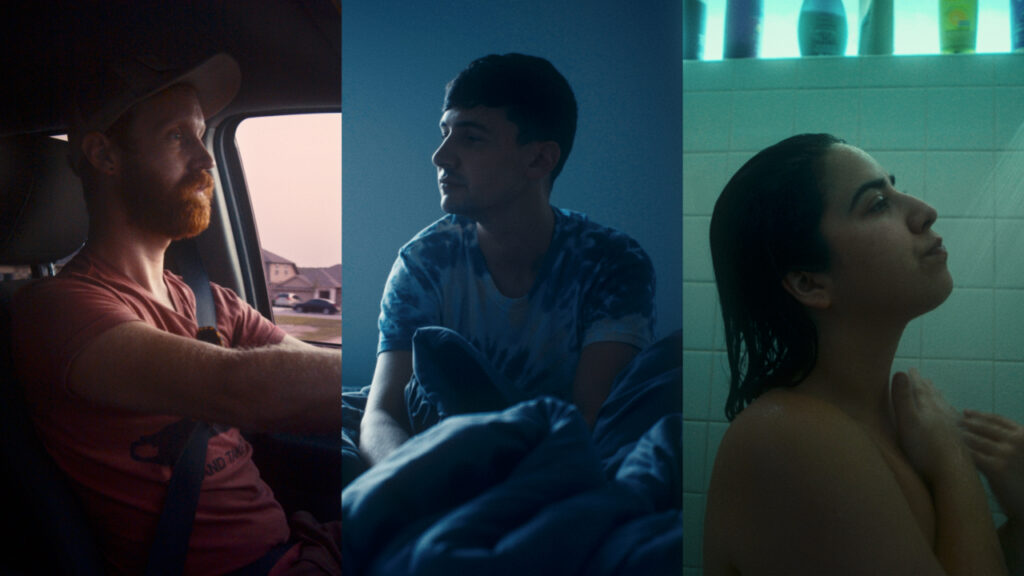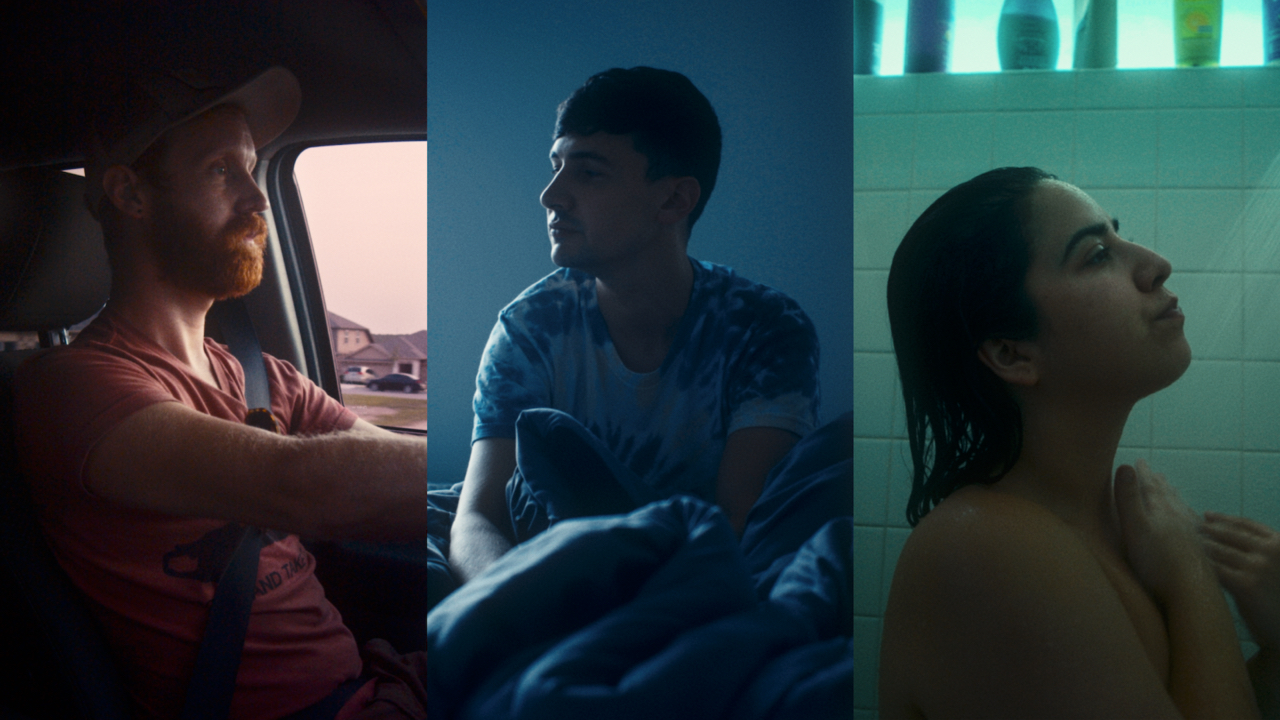The brilliance of Three Headed Beast will fully reveal its brilliance at varying points in time to different audience members. But make no mistake, one way or another, this film will announce its presence to a room in a way that has nearly left me speechless. This film extends itself far beyond a great debut, and instead, announces a new dominant voice in indie filmmaking. At just 24 years old, the directing duo of Fernando Andrés and Tyler Rugh boldly introduce themselves to the world by the ways of a tender, quiet, and intimate cinematic experience. The world in which Three Headed Beast takes place will leave you mystified at its beauty, completely immersing you somewhere in Austin, Texas, where the duo is based. As the lives of three individuals silently intertwine among one another in a polyamorous relationship, Andrés and Rugh invite you into a world both full of, yet also lacking, communication. In this world, they capture moments in time akin to taking a photograph on vacation. And what they express in this film within subtle moments of serenity is more than most films can achieve in a whole runtime.
Three Headed Beast can do so much with so little. Only sparingly using dialogue across its 83 minute runtime, Peter, Nina and Alex revel in the beauty of a comfortable silence. The smooth, free flowing camera captures the three in the daily minutiae of life: Waking up and showering, taking a break at work, smoking while your friends help you unpack. As the three lives coexist in the same overlapping spaces, they also lead entirely unique lives as displayed by the triple split-screen. Each head of this titular beast is allowed to exist independently from one another, allowing for a fully fleshed out set of characters that come together in ways that feel both nuanced and natural. Yet as mild-mannered as the hushed film can seem, it features a deeply intense sound design and subtle whiplash visual moments that show this directing duo is more than comfortable with experimentation.

Whether it’s hearing an increasingly consuming drone or the repetitive whirring of a fan, the sounds of Three Headed Beast keeps the viewer grounded in a scene. Even if moments of the film feel akin to being brushed back and forth through a dreamscape of clouds, we are snapped back to reality alongside the characters present. And this is all layered on top of the minimal dialogue. Instead, we are treated to pure bursts of emotion: Giggles, a grunt, moaning. In a bold move that pays off tenfold, Three Headed Beast is a silent creature, and it’s difficult to tell just when it will open its mouth and express itself vocally. Yet, the acts of tenderness, lust, and passion speak volumes all on their own. Whether it be over a bottle of vodka or a meal being shared, a single look can tell a whole story or sustain an entire shot. The framing of the camera feels so consistently distinct that it’s unbelievable to remember this is a debut feature. Indie film darling Jim Cummings called this film, “Hypnotically beautiful”, and so many aspects are at play that allow the duo to enrapture their audience in this very specific manner. There was very clearly a meticulous attention to detail here, and somehow, it all comes across as second nature from the talent both in front of and behind the camera.
Three Headed Beast is also exceptional at branding itself as a full-blown comedy at times. This film is full of cinematic homages, yet its adoration for the comedians of silent-era films is most frequently on display. Whether it be an absurd framed photo, an uncaught eye-roll, or just a hat being removed, it’s easy to laugh and even easier to grin from just how cleverly every comedic beat comes together. Life is all about balance, and Andrés and Rugh seem acutely aware of that notion. This film is profoundly meditative, from the glowingly gorgeous visuals to the core dilemma it aims to expose. In a time where communication has never been more simple, how we actually speak to one another is becoming more and more lost to pixels and codes. Whether it be constantly turning to podcasts for advice or erasing a text divulging one’s emotions, each individual faces a battle of communication. If they decide to say something, just how will they go about it? Is it even worth a discussion? When the world being captured glows as beautifully as it looks in this film, why risk causing a storm among that simplistic elegance?
As Peter and Nina’s organic silence slowly recontextualizes itself the more Alex becomes ingrained between the two, the balance between loneliness and connection becomes more and more apparent. Random hookups makes way for tears being shed in an empty home. A dinner party will lend itself to feigning openness yet refusing to admit truth. So often in life, we bottle up how we feel in order to preserve a fleeting emotion in hopes of it flourishing once more; and Three Headed Beast understands the complexities that follow. In either instance, somebody is bound to get hurt. And most people are aware of this fact, but drowning it out with vices, meaningless late-night connections, and internal suffering often seem like a better solution than losing what you believe to be a piece of you. Andrés and Rugh have created a deeply enchanting film, one that is equal parts immersive on a grand scale and intimate. A debut operating on this level technically is one to be treasured on its own, but when paired with refined message of its filmmakers, these two are destined for success.
Three Headed Beast celebrated its world premiere at the Tribeca Film Festival. Tickets for screenings and more information on the film can be found right here.
